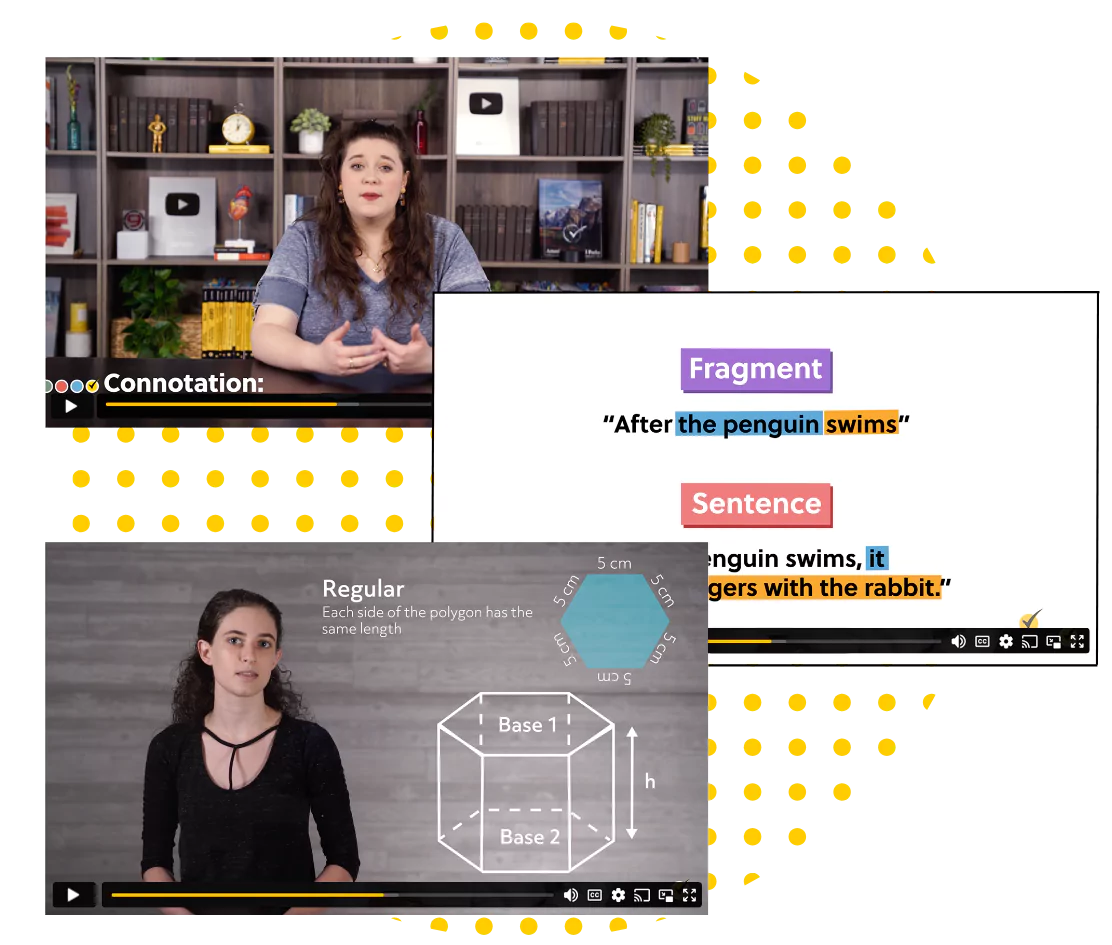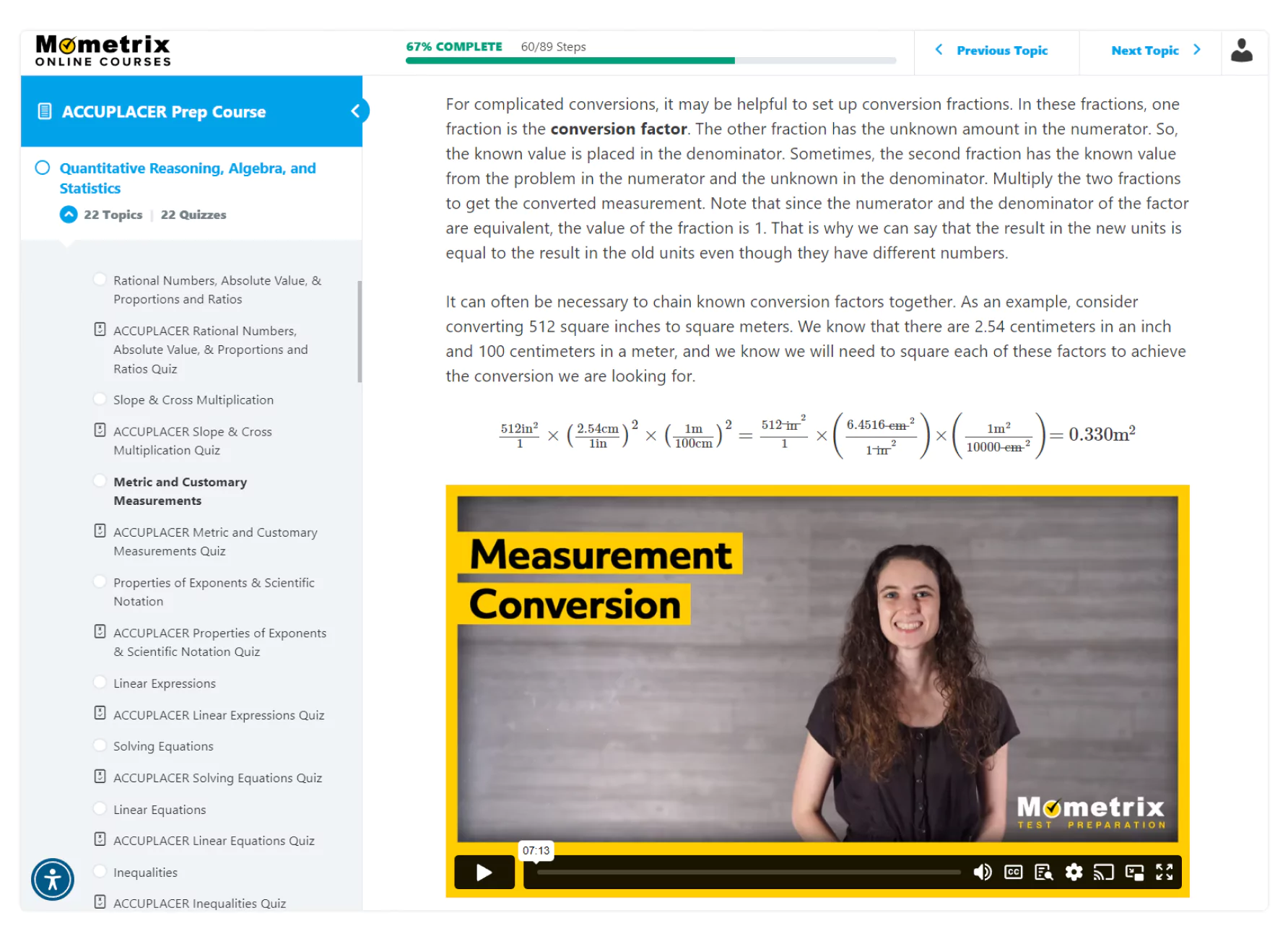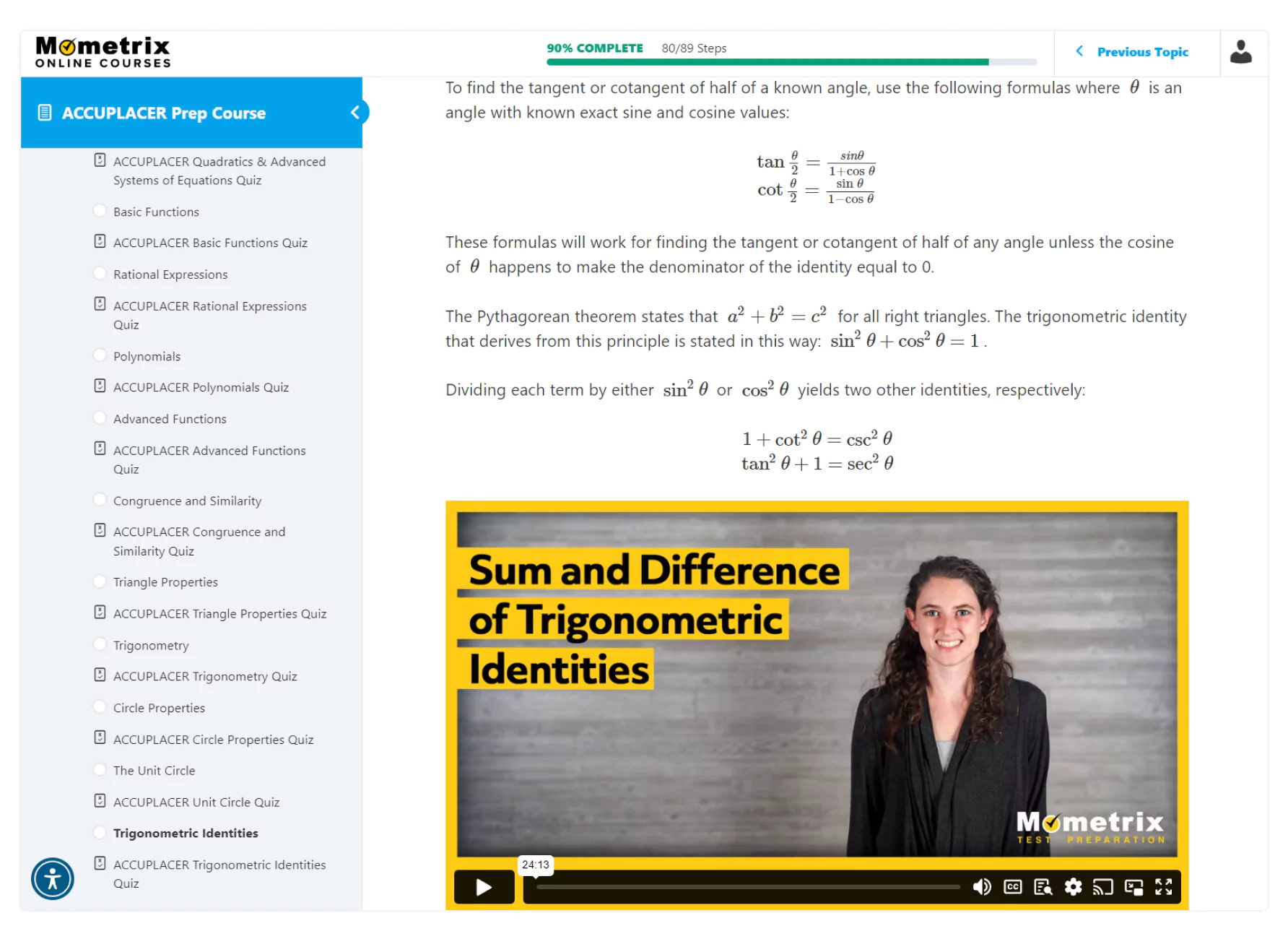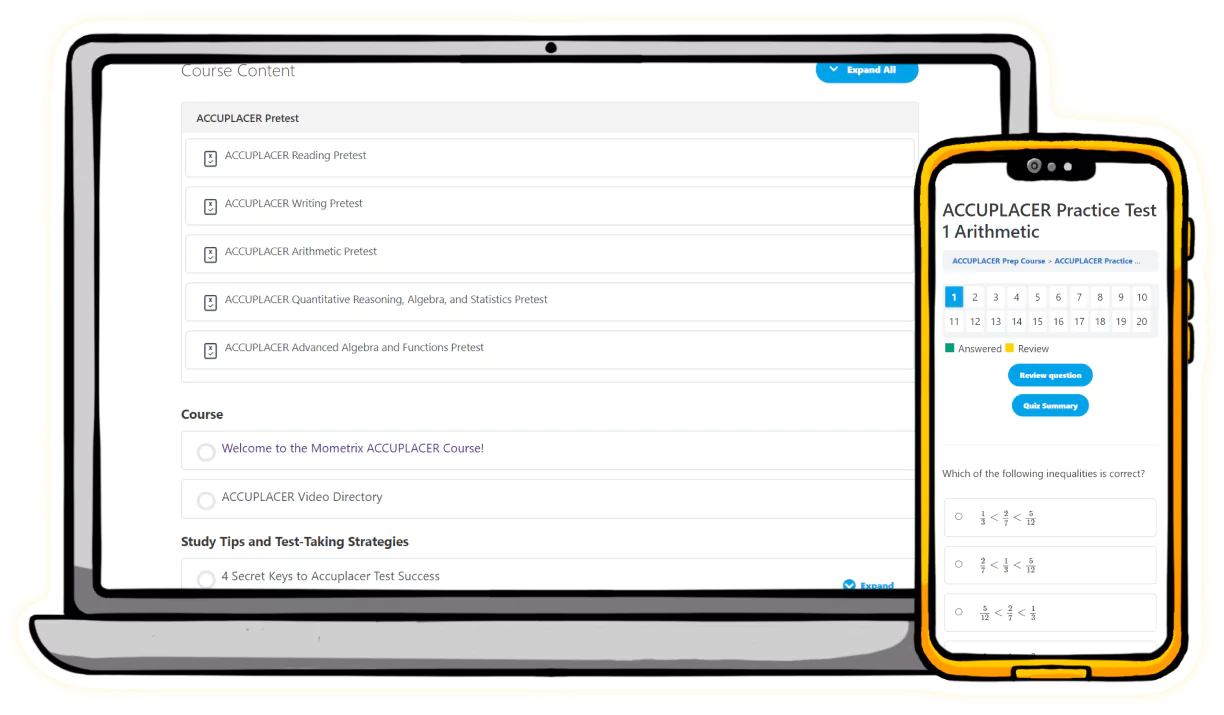1,250+ ACCUPLACER Practice Questions
Know Exactly How to Tackle Every Question
- Practice with 8 full-length ACCUPLACER practice tests that mimic the actual questions you’ll find on the exam
- Master ACCUPLACER question types so that nothing will surprise you on test day
Includes In-Depth Answer Explanations
Learn from your mistakes by understanding the questions you got wrong. Walk through their step-by-step explanation so that you nail them on test day.
“This course was outstanding! It was a very good refresher and study site for my upcoming ACCUPLACER test.“
Braden
Try For 7 Days Risk-Free
Use our online course for a week
Start today and gain instant access. If you don’t think it’s for you, we’ll give your money back, no questions asked.
Start Studying
“This helped prepare me so much! Great resources are provided within each module! Will definitely use again with future exams.“
Emily
270+ ACCUPLACER Review Videos
Difficult Topics Simplified
- Clarify concepts you don’t fully understand
- Watch ideas explained visually through animations, diagrams, and illustrations
- Listen to instructors teach difficult subjects in an understandable way
Over 23 Hours of ACCUPLACER Video Reviews

“This course is amazing. Before I started, my scores were as follows: 246 in reading, 264 in writing, and 270 in math. I needed a 265 in each section to get into the school I want to attend, so clearly, I was not there yet, and I had one retake of the test. To study, I bought this course, and it helped so much in boosting my confidence. Because of this, I ended up with a 270 in math, a 270 in reading, and a 286 in writing. Thank you so much!“
Arnav
70+ ACCUPLACER Study Lessons
A Step-By-Step Plan For Studying
- Focus only on the essential topics you need to review, without the fluff included in other courses
- Track your progress by marking lessons complete and reviewing your practice question statistics
- Highlight areas you need to brush up on with lessons adapted from our highly reviewed study guide
More Than A Textbook!
If you get tired of reading, there are several other ways to learn the material on your test. Reinforce your learning by watching videos and reviewing detailed images of the most important topics.

Join 6,000,000+ Students Who Use Mometrix
We’ve been down this road with millions of students before. With over 20 years of experience, you’re in the right hands.
Start Studying
Conquer the Math Section With Ease
The ACCUPLACER exam covers a range of reading, writing, and math topics, from figurative language to trigonometric identities. Even the best test takers may need a refresher on certain areas.
We understand that math, in particular, can be a stumbling block. That’s why our ACCUPLACER prep course includes dedicated subjects to brush up on essential calculations like the unit circle, quadratics, and probability. We break down complex formulas into easy-to-understand steps, ensuring you feel confident tackling any math-related questions on the exam.
Our comprehensive course goes beyond simply memorizing the content, equipping you with the practical knowledge and skills to succeed in your career.

Use Bonus Tools and Tips
Getting a high score on the ACCUPLACER exam requires more than just learning the material. You need to learn the test. This distinction is the biggest difference between students who get a decent score and students who get a great score.
Our course includes the secret keys to the ACCUPLACER exam that we’ve learned through years of research. We’ll tell you how to get questions right when you have no idea what the answer is, the clues hidden in questions to help you guess correctly, and the best way to maximize your studying while minimizing your effort.

The 5 Secret Keys to ACCUPLACER Success

Top Test-Taking Strategies

Best Study Skills

How to Overcome Test Anxiety
Prep For Every ACCUPLACER Subject

Reading
10 Lessons | 10 Quizzes
Writing
11 Lessons | 11 Quizzes
Arithmetic
7 Lessons | 7 Quizzes
Quantitative Reasoning, Algebra, and Statistics
22 Lessons | 22 Quizzes
Advanced Algebra and Functions
11 Lessons | 11 Quizzes
Frequently Asked Questions
After taking this course, you'll:
- Be familiar with the types of questions on the exam
- Fly through the exam with ease after taking our practice tests
- Use secret tips and tricks to boost your ACCUPLACER score
- Be placed in the right courses to achieve your college goals
Take the next step in your college journey
49.99 /Month
$122 Value
7 Day Money- Back GuaranteeFeatures:
- 70+ ACCUPLACER Lessons
- 550+ Flashcards
- 1,250+ Practice Questions
- 270+ Videos
Topics:
- Reading
- Writing
- Arithmetic
- Quantitative Reasoning, Algebra, and Statistics
- Advanced Algebra and Functions










